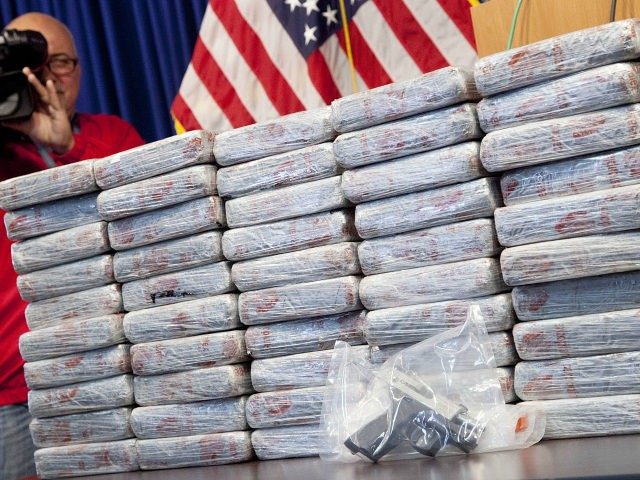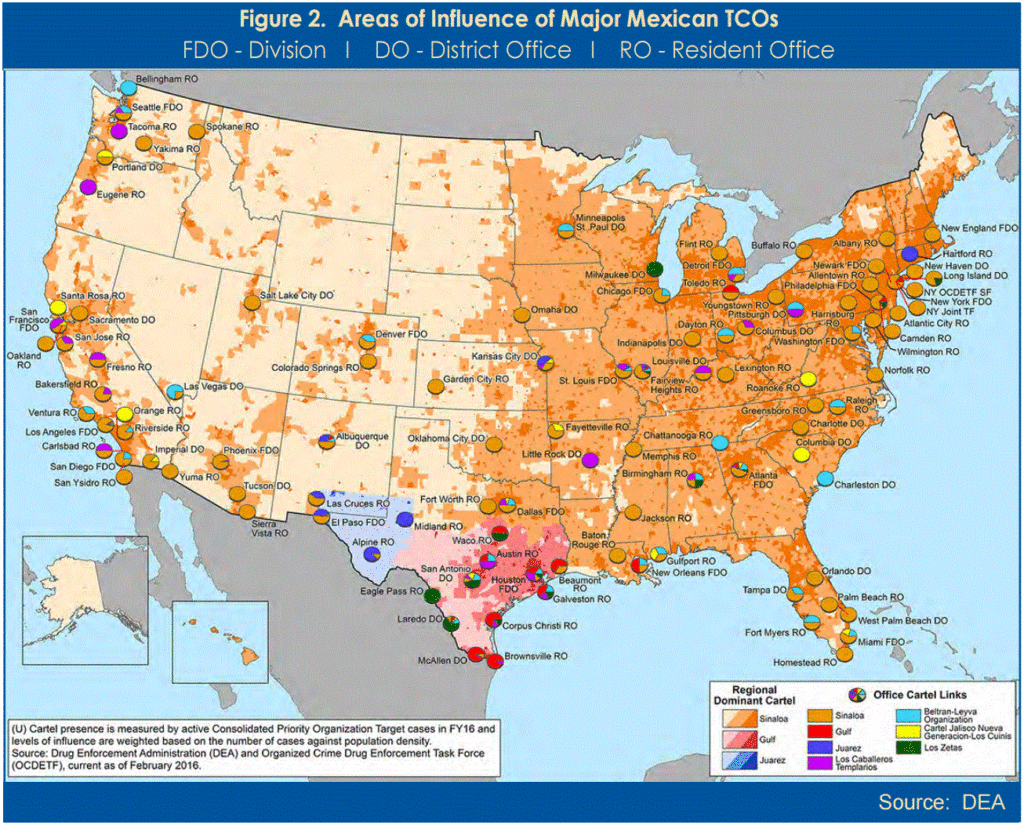Results 1 to 1 of 1
Thread Information
Users Browsing this Thread
There are currently 1 users browsing this thread. (0 members and 1 guests)
-
04-24-2017, 02:53 PM #1
64 Percent of DEA Fugitives are from Mexico
64 Percent of DEA Fugitives are from Mexico, Figures Show
 AP Photo/Mark Lennihan
AP Photo/Mark Lennihan
by BREITBART TEXAS 24 Apr 2017 Washington, D.C. 3
A review of the Drug Enforcement Agency’s (DEA) wanted fugitive list revealed that less than 16 percent of DEA fugitives are from the United States.
The review of the DEA’s wanted fugitive list took place from April 18 to April 21, 2017, in which all 21 DEA divisions were analyzed.
The 21 DEA divisions that oversee the United States had a total of 902 listed fugitives. The place-of-birth of 115 of the 902 fugitives is unknown.
The remaining 787 fugitives are from a total of 38 countries with the overwhelming majority coming from Mexico.
The top three countries that DEA fugitives come from are: (1) Mexico, 505; (2) United States, 124; and (3) Colombia, 21.
Out of the 787 whose place-of-birth is known, 70 percent are from south of the U.S.-Mexico border, 64 percent from Mexico alone.
In an email to Breitbart Texas, the DEA Office of Congressional and Public Affairs said:
Each division is responsible for updating their fugitive website and that is done as needed. So if there is someone that has been arrested and needs to come down they do it, however there are instances where some of them have been arrested outside of the United States so, in that instance, they would remain displayed on the fugitive website until they have been extradited to the United States. Each division does quarterly reviews of their websites to check the status the fugitives and update as needed.
In the 2016 National Drug Threat Assessment Summary, the DEA categorically states that Mexican Transnational Criminal Organizations (TCOs) represent the largest drug threat to the United States:Mexican TCOs remain the greatest criminal drug threat to the United States; no other group is currently positioned to challenge them. These TCOs maintain territorial influence over large regions in Mexico used for the cultivation, production, importation, and transportation of illicit drugs. By controlling lucrative smuggling corridors across the U.S. Southwest Border (SWB), Mexican TCOs are able to introduce multi-ton quantities of illicit drugs into the United States on a yearly basis. The poly-drug portfolio maintained by Mexican TCOs consists primarily of heroin, methamphetamine, cocaine, marijuana, and to a lesser extent, fentanyl. Once these drugs are smuggled across the Mexican border, they are delivered to consumer markets in the United States using transportation routes and distribution cells that Mexican TCOs oversee both directly and indirectly.
The DEA lists the following six Mexican drug cartels as having the greatest drug trafficking impact on the U.S.: Sinaloa, Jalisco New Generation, Juarez, Gulf, Los Zetas, and the Beltran-Leyva Organization.

The most powerful of the Mexican drug cartels is the Sinaloa, which the DEA states it “maintains the most expansive international footprint amongst Mexican cartels. The Sinaloa Cartel exports and distributes wholesale amounts of methamphetamine, marijuana, cocaine, and heroin in the United States … Illicit drugs distributed by the Sinaloa Cartel are primarily smuggled into the United States through crossing points located along Mexico’s border with California, Arizona, New Mexico, and west Texas.”
The entire U.S.-Mexico Border is broken down into sections or “turf” that is controlled by Mexican drug cartels.
One of the reasons that the Mexican drug cartels have so much power is because they often bribe high-level politicians and law enforcement in Mexico which allows them to operate with impunity.
Breitbart Texas is one of the only news organizations that reported on the connections between Mexican President Enrique Peña Nieto and the Mexican drug cartels.
http://www.breitbart.com/texas/2017/...-figures-show/
NO AMNESTY
Don't reward the criminal actions of millions of illegal aliens by giving them citizenship.
Sign in and post comments here.
Please support our fight against illegal immigration by joining ALIPAC's email alerts here https://eepurl.com/cktGTn
Similar Threads
-
PHOENIX DEA MOST WANTED FUGITIVES - 15 OF 20 FROM MEXICO
By Newmexican in forum General DiscussionReplies: 2Last Post: 09-16-2015, 01:15 PM -
Three DEA El Paso Fugitives Extradited from Mexico
By JohnDoe2 in forum illegal immigration News Stories & ReportsReplies: 3Last Post: 12-14-2010, 07:26 PM -
U.S. catching more fugitives in Mexico
By FedUpinFarmersBranch in forum illegal immigration News Stories & ReportsReplies: 0Last Post: 02-03-2010, 10:40 AM -
Mexico arrests 1 of FBI's most-wanted fugitives
By JohnDoe2 in forum illegal immigration News Stories & ReportsReplies: 0Last Post: 10-09-2009, 01:44 AM -
One of top 10 FBI fugitives captured in Mexico
By Charlesoakisland in forum illegal immigration News Stories & ReportsReplies: 0Last Post: 02-27-2006, 09:47 PM


 3Likes
3Likes LinkBack URL
LinkBack URL About LinkBacks
About LinkBacks




 Reply With Quote
Reply With Quote


As Sen. Cortez Masto Scuttles Mayorkas' Impeachment, Illegal...
04-18-2024, 06:27 AM in Americans Killed By illegal immigrants / illegals